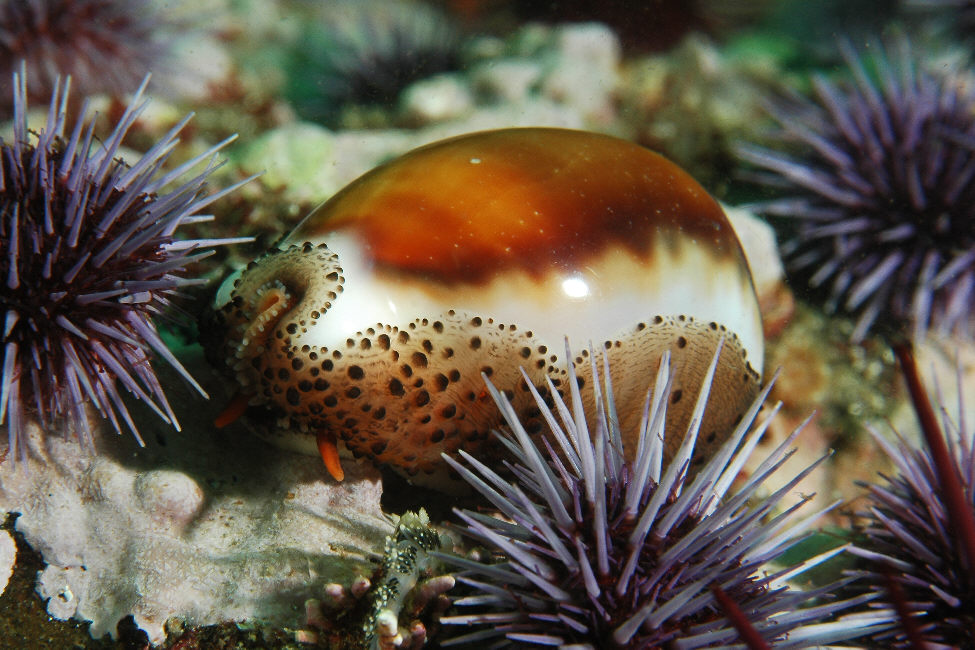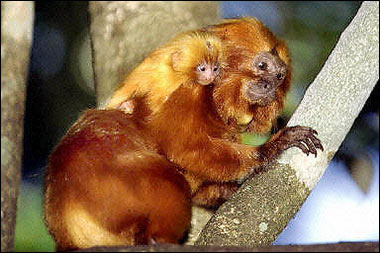Chinese children are very familiar with the legend of a magical monkey king called "Sunwukong", who is believed to have helped the weak with kindness, and fought evil with justice. But the truth is, real monkeys are fighting mankind for their own survival. There are three species of Golden Monkeys  who all live in the forests of China, with some species in the mountains. Golden monkeys live in large groups into the hundreds. They seem to have a hierarchical society, like baboons, and inhabit the bamboo jungles, coniferous forests, and rhododendron thickets found in the high mountains and are mainly distributed in Sichuan, Gansu, Shaanxi provinces and Shennongjia mountainous area of Hubei Province in China.This area is snowbound in the winter. Therefore, to adapt to the cold, golden monkeys have developed robust bodies and long thick fur that covers their shoulders. During winter, they survive by eating slow-growing lichens. Their bright blue faces are offset by flame-orange fur. Sexual dimorphism is expressed in the greater length of the males' canines. The males also produce wart-like growths at the corners of their upper lips, which are considered a secondary sexual trait.
who all live in the forests of China, with some species in the mountains. Golden monkeys live in large groups into the hundreds. They seem to have a hierarchical society, like baboons, and inhabit the bamboo jungles, coniferous forests, and rhododendron thickets found in the high mountains and are mainly distributed in Sichuan, Gansu, Shaanxi provinces and Shennongjia mountainous area of Hubei Province in China.This area is snowbound in the winter. Therefore, to adapt to the cold, golden monkeys have developed robust bodies and long thick fur that covers their shoulders. During winter, they survive by eating slow-growing lichens. Their bright blue faces are offset by flame-orange fur. Sexual dimorphism is expressed in the greater length of the males' canines. The males also produce wart-like growths at the corners of their upper lips, which are considered a secondary sexual trait.
Golden monkeys are rare and obscure, and they're just beginning to be studied. Living in the mountains where their habitats are disappearing rapidly as the countryside is cleared for more pastures, villages, and roads, Chinese golden monkeys are highly endangered. So it's a race to study them before they disappear.
In the past 40 years, the living area of the Yunnan golden monkeys has shrunk by a third, while the pasture area created by fire and timber-harvesting has doubled. The monkeys are also killed for their beautiful fire-orange fur and also their bones, which are believed by Asians to hold special medicinal powers.
More than 86% of monkey groups were separated by roads and villages, which blocked communication and resulted in in-breeding and species degeneration. Small groups in the forests have been wiped out. Those that are left are too few to carry on the species line and are at the edge of extinction.
Attempts at artificial breeding of Golden Monkeys have encountered many difficulties. In Kunming Institute of Zoology, almost all the 10 monkeys born in the past decade were male, which scientists could not explain. Perhaps not surprisingly, researchers have discovered that the best place to protect them is not in laboratories or breeding centers, but in their natural habitats.
 The golden cowrie is a marine snail named for its brilliant orange shell. It is among the largest of the world's 250 known cowrie species, reaching four inches (ten centimeters) in length.
The golden cowrie is a marine snail named for its brilliant orange shell. It is among the largest of the world's 250 known cowrie species, reaching four inches (ten centimeters) in length.











